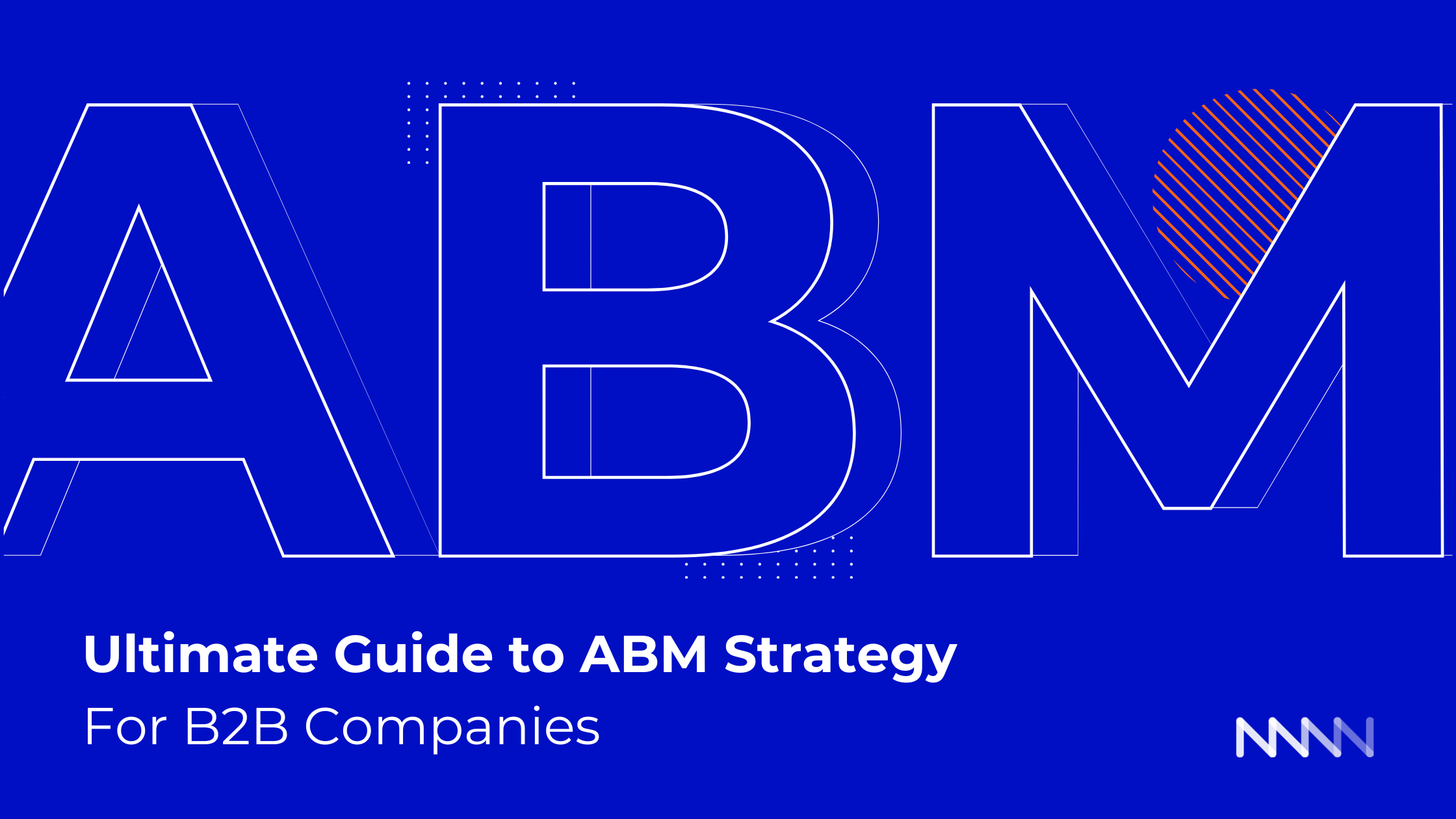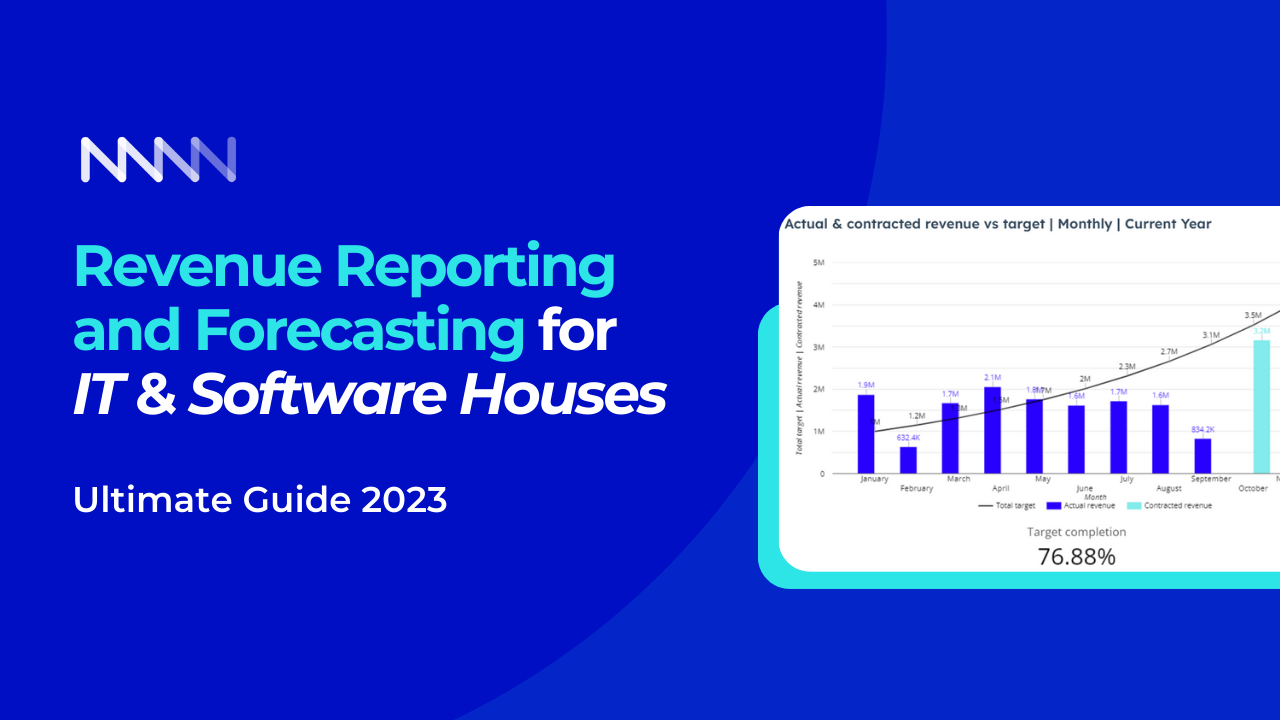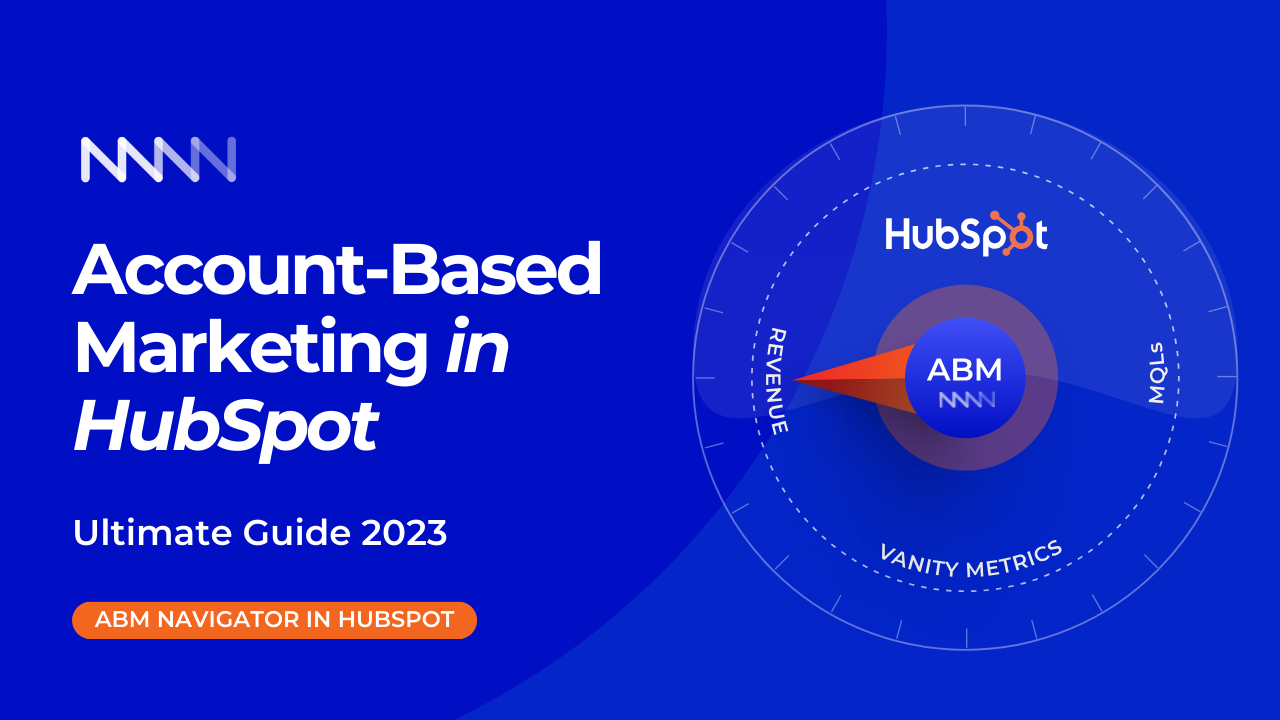How To Run Account Based Selling For Your B2B Company [GUIDE]
It's no secret that the business world is changing.
Sales outreach is not good for businesses with long sales cycles. Account based selling is a new way to sell with the technology we have in hand today. Not too basic or too complicated.
Let's take the greatest qualities of both worlds and combine them to create a whole new way. In this you'll find out how to run account based selling for your organisation. We go through all the things in this article.
Table of Contents
What is Account Based Selling? And why should you care?
Account based selling is a new way to sell that targets entire organizations instead of individual contacts (decision-makers). Account Based Selling is like, why you need to know who the account executive has to deal with and what pain points are.
The Account based selling (also referred in this article as ABS) mindset takes into account company size and revenue as well as the number of employees working in it.
Simply put, you dig into your customers needs.
Account based selling is part of ABM (Account-Based Marketing). Hence, most of the strategies you use in selling can be applied in the marketing programs. That is why we love this strategy, in both departments and creates a synergy between the two.
We also need to move to ABS because of the development of technology. Technology helps sales development teams do their jobs better.
Technology has given them the chance to completely change how they do business. Hence, they can be more relevant and personalized when they start engagement with their customer stakeholders.
The point is, as the world has changed, so has the art and science of sales development.
What should be your business objective? An ITSMA study shows that companies that embark on an account based program have these 5 top objectives (in a priority order)
- Growing business with existing accounts.
- Selling to new accounts
- Support to new accounts
- Changing perception / strengthening reputation with targeted accounts
- Entering new marketing or selling to new targeted accounts
And if your next question is "What is the ROI?" Here are some stats from ITSMA to back us up with "why you need to start investing in account based programs". From the same study.
- 34% of companies say they have a significantly higher ROI compared to traditional initiatives.
- 37% believe is a somewhat higher ROI.
That is 71% of companies in ITSMA research saying they have higher ROI that other traditional activities. Nice numbers I would say.
Now, look, I don't want to dig in into more data, after all you are here to find out how do we do it.
Let's get started.
Here is what we need to figure out:
- Strategy
- Technology Infrastructure
- Sales Research and Intelligence
- Sales Copywriting and Personalization
- Outreach Execution
Who Should Use Account Based Selling?
Now, full disclaimer here before you go forward. The prerequisites for account based programs, especially the selling part:
- You use consultative selling techniques, such as challenger selling or SPIN, where the emphasis is on the client and their concerns, are examples of consultative selling.
- You have your brand positioning figured out (here is a webinar on the topic if you still need to work on it).
- Your ACV (average contract value) is over €50K. The ideal ACV is €100K.
- At least 5 case studies under your belt.
- You are a subject-matter expert in an industry or topic.
Account programs overall are for consultative selling techniques, such as challenger selling or SPIN, where the emphasis is on the client and their concerns, are examples of consultative selling.
Here is a nice infographic you can use as an assessment model for your entire team.

Source: https://www.saleshacker.com/account-based-sales-development-success/
How to Create an Account Based Selling Strategy?
It is not rocket science, believe me.
We will take you by the hand and show you how to build it step by step. Let's see what are the strategy components.
1) Account identification - target accounts list, also referred to as TAL.
2) Account prioritization - what is driving your accounts?
3) Account segmentation - mapping and profiling stakeholders.
4) Your offer to the accounts - developing your targeted accounts value proposition.
Each of these components may be a self-sufficient blog article in and of itself. I'll get you through them as fast as possible in this post.
Let's start with Account Identification (TAL)
Build your target accounts list (TAL)
In this stage we see a lot of companies debating what accounts should they choose.
If the deal values are large, we choose several accounts. We take a one-to-one strategy with them. Otherwise, we go for group accounts, and we choose to go after a particular industry (one-to-many approach)
To help us understand who high value accounts are, we use the McKinsey Policy Matrix, also known as the directional matrix or 9 box model.
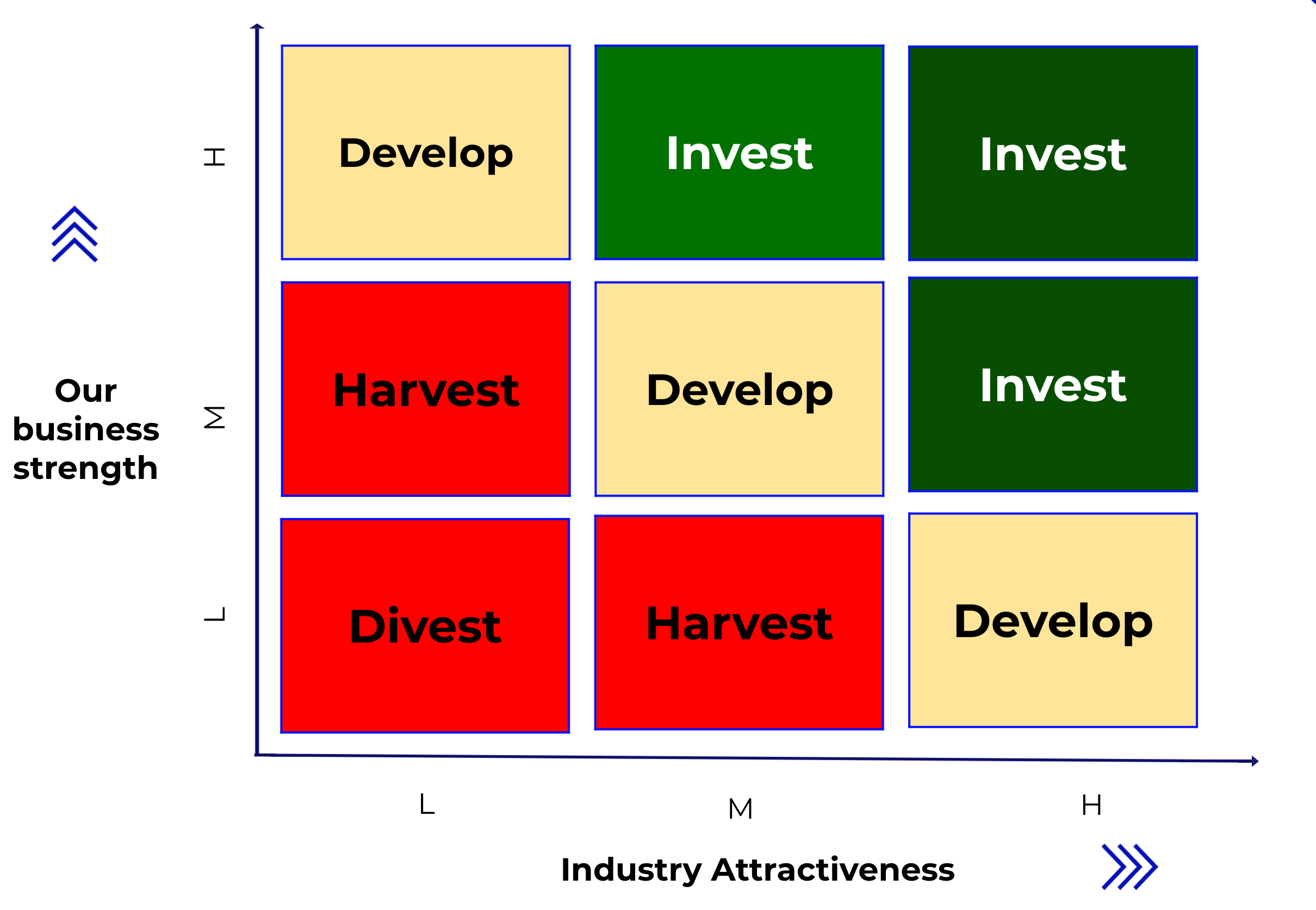
The box focuses on 2 decisional factors:
- business strength - Our competitive advantages in the accounts we are pursuing.
- industry attractiveness - How attractive the industry is to our business.
We use McKinsey’s policy matrix to prioritize the accounts and the type of ABM programs we run, adapted by Bev Burgess for ABM
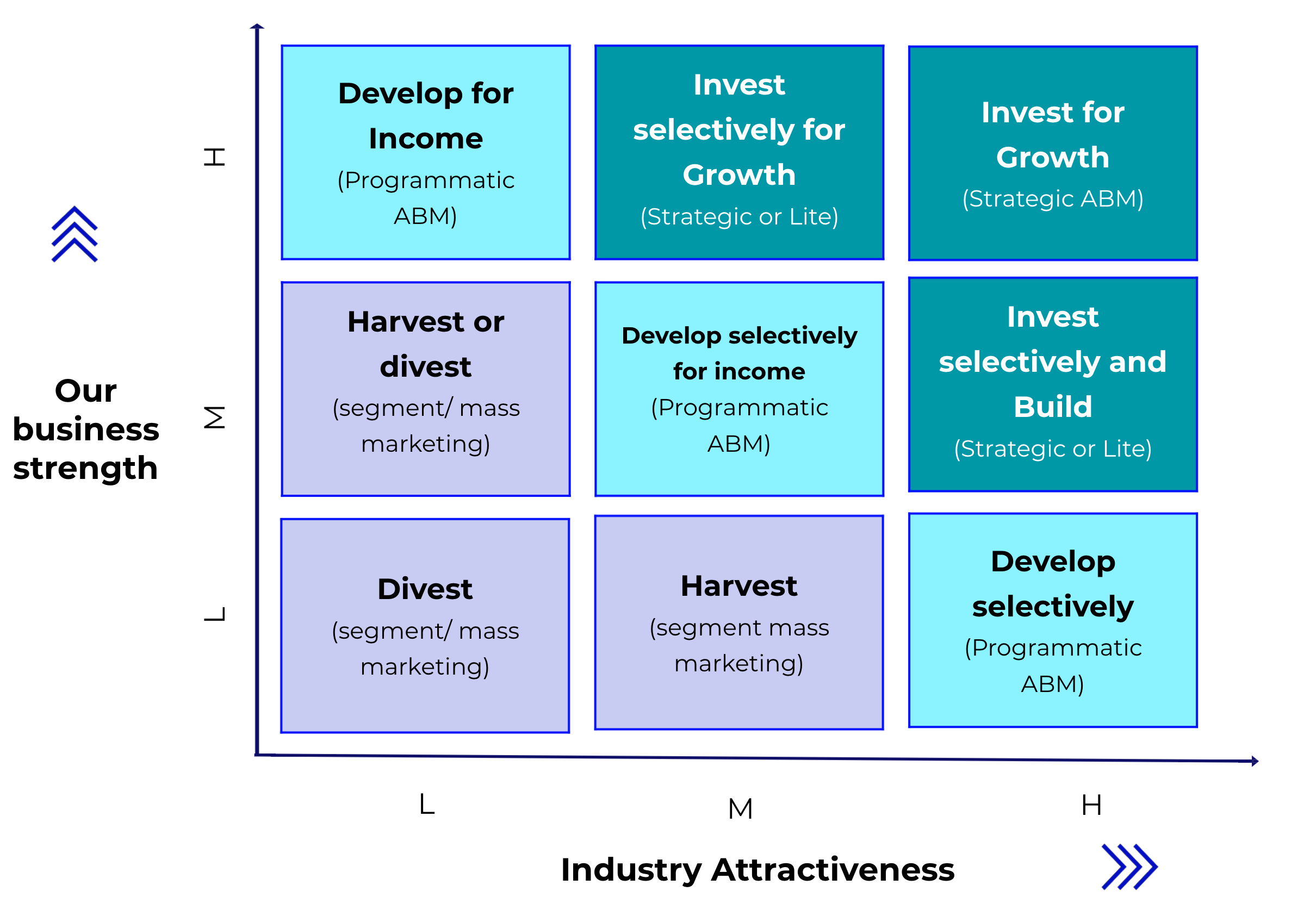
We recommend running a workshop with both sales and marketing teams to decide on:
- factors to evaluate
- importance weighting for each factor
- evaluate the importance of each factor
Example of Factors → MAN Digital (internal document):
Use this excel template to calculate your factors and add them to the 9 box model. Here is the file with instructions.
Perfect. Now you know what industries you will target.
Let's make the ideal customer profile.
Create your Ideal Customer Profile (ICP)
Now that we understand what industries we will target with account based sales, we need to build our ICP for the target accounts list.
This process is crucial in the account based sales process, but it is often overcomplicated by teams.
Basic ICP should include:
- Company Size
- Industry vertical(s)
- Revenue
- Budgets
- Geography
- Technographics
Here is an example of an simple ICP:

For more complex ICP's we recommend this recourse: ICP Template
To be more specific here is an illustration on where does the ICP located when choosing your B2B audiences.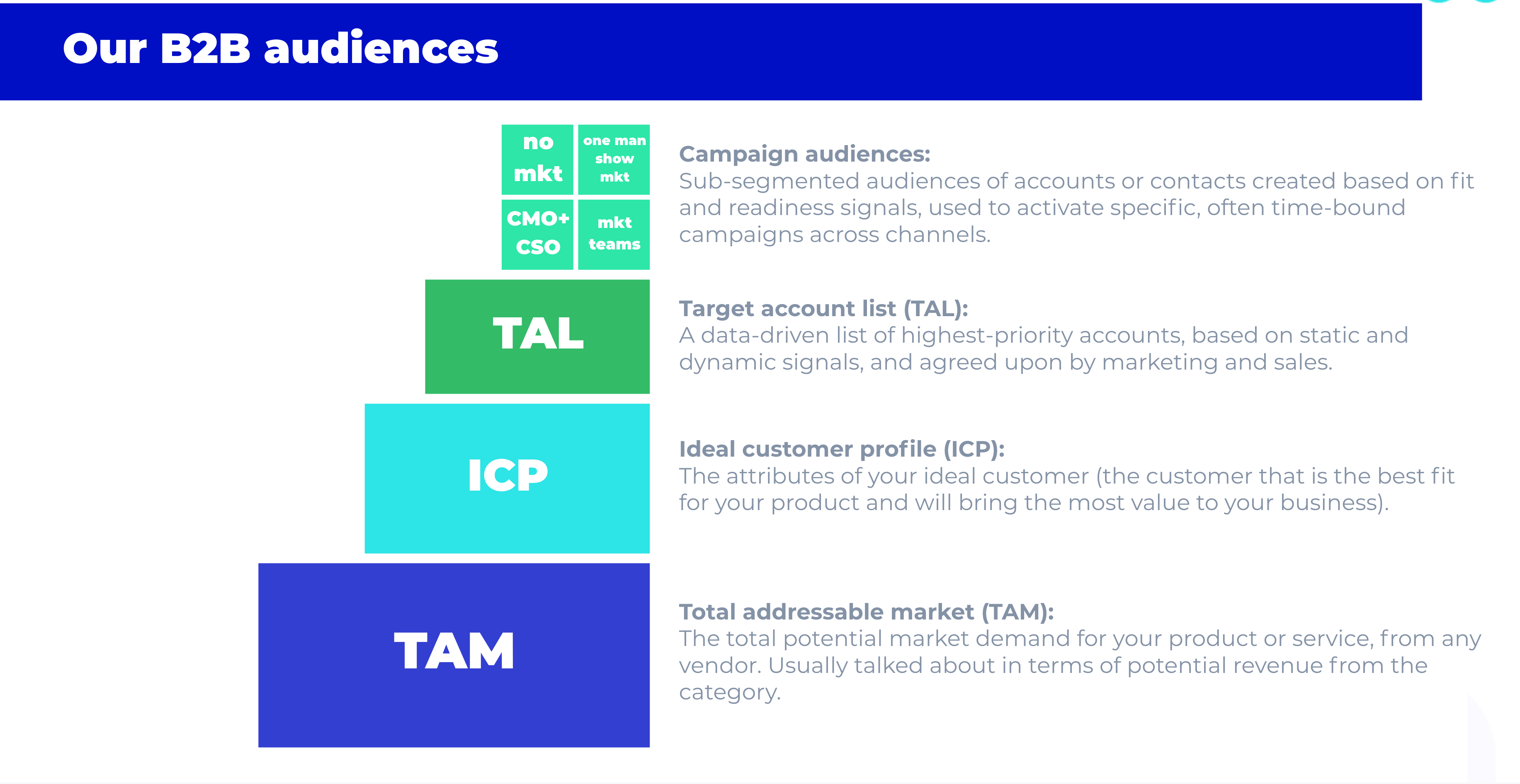
As soon as you have clearly defined your ICP it is time for prospecting.
While prospecting is a long discussion and separate blog posts, are some tools our sales team uses to do prospecting.
- ZoomInfo (Intent - very powerful to understand the B2B intent of our accounts)
- Apollo.io (prospecting + outreach - brilliant to start with)
- FTL, Find That Lead (perfect to find personal email, not only business. We use to build advertising audiences).
- LinkedIn SalesNavigator (Social Selling, this is a must for any sales process)
- SalesRocks (we use it very rarely).
Remember, we are an agency, so we do heavy prospecting. You might not need all of these tools. Usually LinkedIn SalesNavigator and Apollo or Zoominfo are enough to get started.
What is driving your accounts?
Okay, we know who we want to target.
Now let's see what is important for those high value accounts?
Essentially, we want to know what makes the accounts tick and what are their paint points.
Without knowing what drives our account, we are doomed to fail.
The marketing and sales teams then design the appropriate engagement programs to reach them.
ITSMA research clearly shows that we need to build knowledge and understanding in the industry, build thought leadership to gain more trust from our accounts and understand the business issues of our accounts.
[source: Bev Burgess, The Practitioner's Guide to Account Based Marketing]
While this process deserves its own blog posts, here is what we do at this stage:
- starting point vs plans
- make a SWOT analysis of your offering to your TAL
- map out what is the industry context (what are the biggest challenges, and how it is addressed)
- account research - the complexity here depends a lot on the deal size
- map out industry needs and our offering to decide what programs we will run against them [illustration below].
Example of industry imperatives research we did for software houses:
Example of account research for high value deals:
Example of account research for medium value deals:
Every successful account based approach, we run with our clients is based on heavy research.
We put this together for each industry. Here is our example for the software houses industry:

Here is an example of how we map out the industry's needs and our offering and the plays (tactics we will run).
Mapping and Profiling Stakeholders
Now it is time for buying personas.
But believe me, it is different from what you might know, as it is highly focused on the buying process.
Here is our process:
- Identifying buying persona and buying committee hierarchy [illustration below]
- Mapping the existing buying committee in your CRM - create lists with your existing buying persona's in your CRM.
- Identify stakeholders and their wider network (B2B Influencer - relevant for higher deals). - essential to connect and engage with first before reaching out to decision makers.
Map and map and map and map and plan your outreach around multiple stakeholders.
Example with buying hierarchy from our internal documentation:
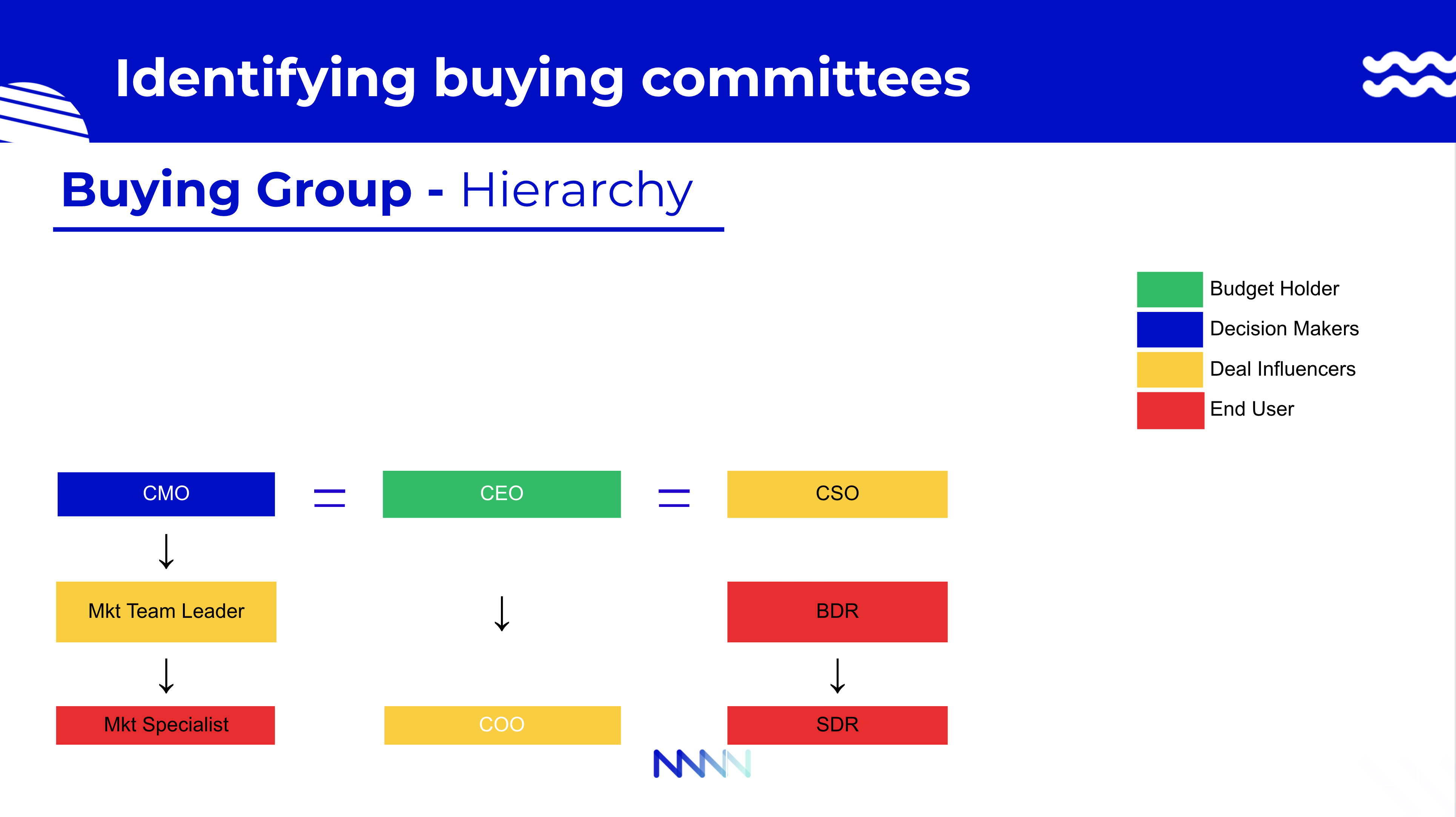
Use this buyer persona template to create yours.
Develop Your Targeted Accounts Value Proposition
One of my favourite parts of the strategy for account based selling.
As we know, customer acquisition costs of a hot B2B lead can be high.
I have seen it way too many times.
Teams do all the hard work, spend all the ad budgets, setup all the tools with the wrong offering?
This is why crafting the right offering and value proposition is so essential for the success of the program.
Value is the clients' assessment of costs versus benefits. These can be:
- tangible benefits (such as revenue, cost reduction).
- intangible benefits (such as recognition, brand esteem, ability to join prestigious groups of companies).
Using this illustration from The Practitioner's Guide to Account Based Marketing by Bev Burgess clears out the types of value proposition.

One of the easiest ways to do value proposition is presented in Bev Burgess book, "The Practitioner's Guide to Account Based Marketing". It is a 6 - step exercise:
- What are the needs of the account?
- What is the company doing to address these concerns?
- Identify the target. Who needs help?
- Your solution to the problem is ____
- Benefits the buyer will receive
- Key differentiators from your competitors (how are you different)?
Check out the webinar on B2B Brand Positioning we did with Survicate for more in-depth content on B2B differentiation and how to build a value proposition.
How to Set up a Technology Infrastructure for Account Based Sales?
Both the marketing team and the sales team need to work hand in hand in order to set up the technology infrastructure for account based selling.
In this section we will focus our attention on technologies that are specifically designed for an outbound strategy.
Next, we will show you the steps we follow in an account based selling process.
Email Warming
To protect our default email address from being flagged for sending out too many emails (even though we don't send that a good deal of emails in a account based selling approach), we create a brand-new email.
The newly created email and doesn't have enough usual activities(sending, receiving, replying), hence we make sure automate this process and simulate email activities.
It is very technical, but very important for the campaign as it is responsible for landing the email in the inbox of our persona.
You have to have a warm email. It will increase your response rate by 100%.
At this stage you want to make sure your email address is not a brand new one, and you have activities (sending, receiving replying) with the account you'll use for outbound.
We use email warmer tools like, Lemlist, Email Warmer, SalesRocks to achieve these activities.
Sales Outreach Automation
I am a geek about sales automation and so are some of my colleagues. We've been testing a lot of tools for outreach and best 4 tools we've chosen are:
- Apollo.io (perfect for both prospecting and outreach) - best to start with as it has a good database, Chrome extension, outreach automation and personalization tokens (customizable). It doesn't really have good report for accoun based and it is more contact focused.
- Salesloft - When you target multiple stakeholders from the same company, and you want direct integration with ZoomInfo or Apollo.io this tool is great for sales teams. Perfect when you have at least 3-5 sales team members.
- Drift - continue the outbound conversations on the website - perfect if you already use Salesloft and you have a good amount of traffic and 5 sales people.
- HubSpot Sales CRM - You might think I am bias here but believe me when I am saying HubSpot is one of the few CRM's out there that has account based selling in mind, and it is affordable.
I strongly suggest that you avoid using terrible CRM and automation if you are considering account based selling. solutions. Btw. here is the G2 Grid for CRM'.
And I know you will ask me "What about LinkedIn... Automation?"
Now this is a sensitive topic, as LinkedIn is banning accounts that use LinkedIn automation extensively, and they can detect if you are using chrome extensions. for automation.
Also, their policy to not send more than 100 connection invitations per week.
So what do I recommend? Use LinkedIn Sales Navigator to find B2B leads, integrate with your CRM and sales outreach tool and (this is why you need a good CRM.
Here is how you can use it inside of HubSpot.
Set up your CRM for Account Based Selling
Our CRM choice here is HubSpot. It has all the features needed for account based marketing.
I wrote an extensive blogpost about ABM and HubSpot and how to set things up. Also, we have a webinar on the topic if you really want to dive into deep waters.
For account based sales and reporting, it is very important you have a clear account and lead management framework.
Pipedrive, FreshSales, ZohoCRM are all good for the typical sales approach (which, as we discussed, is fading as it is spammy and not effective). Obviously there is Salesforce but if you don't have it yet, then choose HubSpot.
We recommend you get a CRM that supports buying roles, or create custom fields for each contact. Based on this make lists of your personas and their buying roles
See an example here:
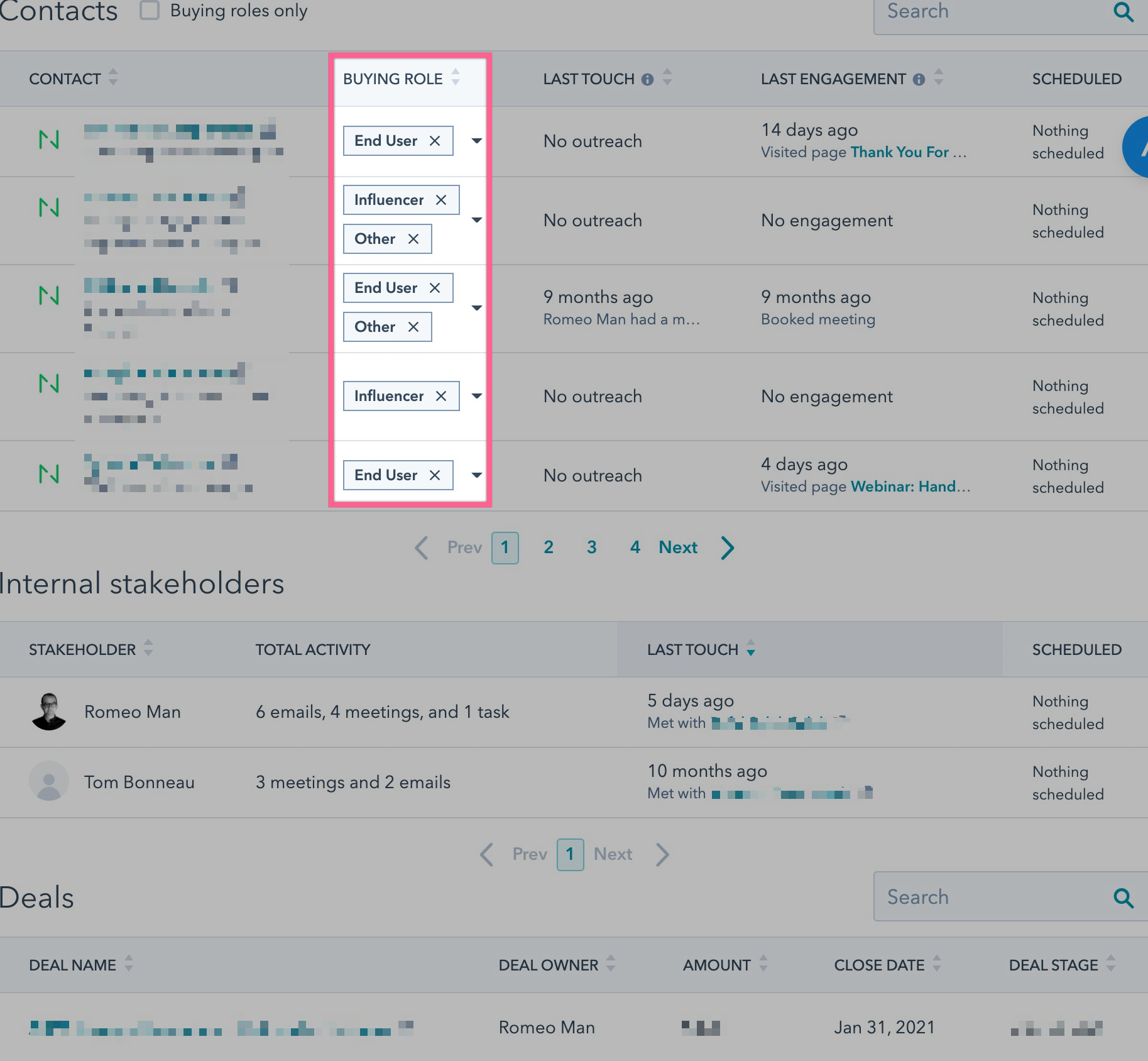
We've combined the "The Measurable Lead Model" by Marko Savic, Director Product at Varicent, and the HubSpot Lifecycle into a framework. The model is here👇.
Within your CRM, you want to make sure reporting is set up. Check out step 3 from here.
Setup anonymous traffic tracking.
This can save you from stopping some activities just because you believe they are not working.
Imagine this.
You set up all the outreach activities.
You start execution.
No replies to your emails.
If your prospects use Apple, now you'll not know if they opened their emails.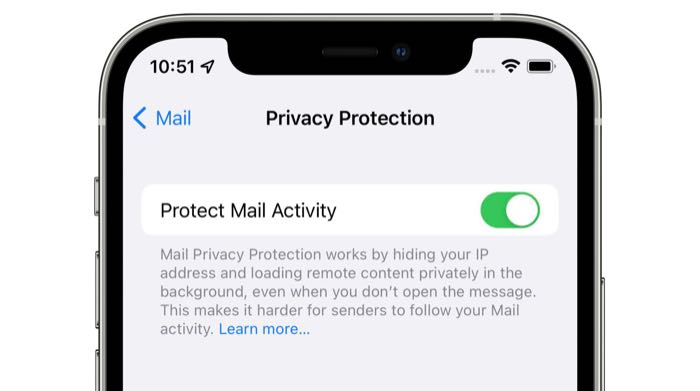
Let's say you also run ads on LinkedIn to give some aircover to your outreach activities, but they don't convert.
You might also do social selling.
Still no requests or replies for your engagement activities.
At this stage, from my experience, sales teams stop the engagements as they assume the programs are not good.
With tools like Lead feeder, Albacross, or Clearbit (free tool) you are able to reveal the companies that are visiting your website.
Here is an in-depth article on how to set it up.
Engagement programs with your targeted accounts.
Let's get some things out of the way, so we can board the same boat.
- Engagement programs are not only emails.
- We are not building engagement programs only for new business.
- Engagement programs are not run only by sales.
What you need to make sure of before jumping on building the outreach is that you are relevant.
How do you do that?
Hyper Personalize your outreach activities.
First thing to remember all the time. Make sure you use personalization. But don't be plain, use insights
An ITSMA research shows that executives expect you to know their business issues, industry knowledge and their roles.
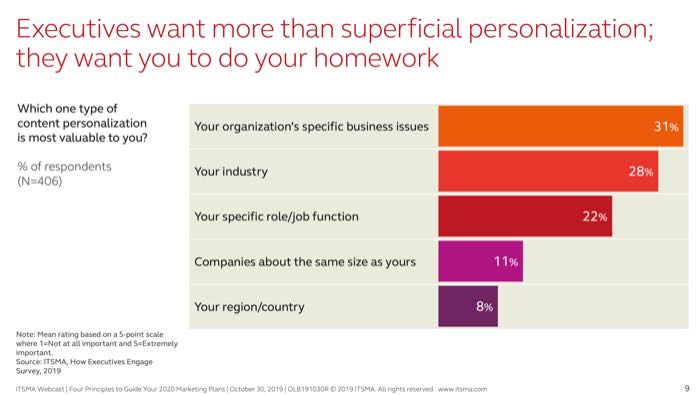
In short, be sure your emails, ads, social messages you highlight their problems, you show them you know their role and industry challenges.
Here is a snippet from one of our emails we sent to marketing managers from companies using HubSpot.

Here is another example from Gong.io:
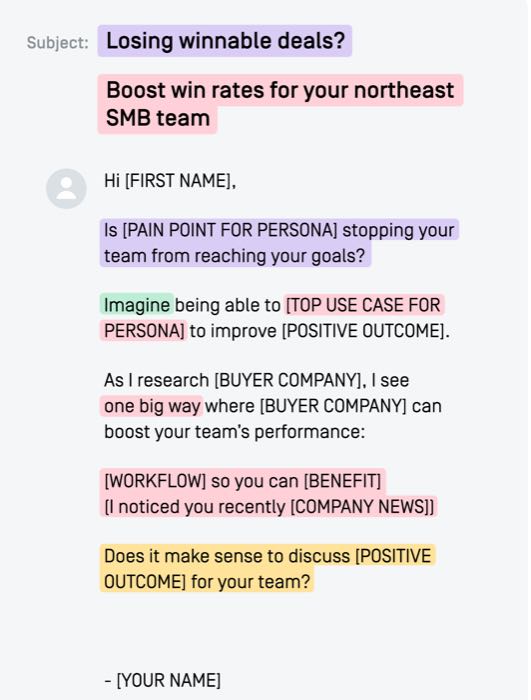
Secondly, make sure if you are not selling at all times. With some of your stakeholders, you want to make sure you are using BASHO (a fancy name used in the industry for super personalized B2B email).
Here is an example I used to reach out to ABM executives. You'll notice I am not selling anything I just genuinely want to connect with them, to

Here are some more BASHO templates from ZoomInfo.
Build Content for Account Based Selling.
Thirdly, build content that is relevant for your audience.
We are building monthly webinars, sometimes even bi-weekly, that we later on re-purpose into podcasts and blog posts, so you can give munition to your sales people.
Type of content to create that works with account based selling:
- Use cases - showcase with insights what you did for other organizations (here is one of our examples)
- Case Studies - Showcase results and concrete value proposition. (example here)
- Run webinars or podcasts showcasing your expertise (here is what we do).
Here are some examples of events we run:

All this is "meah" if you don't connect it with social posting:
and with events on LinkedIn - so we can invite our stakeholders via social.
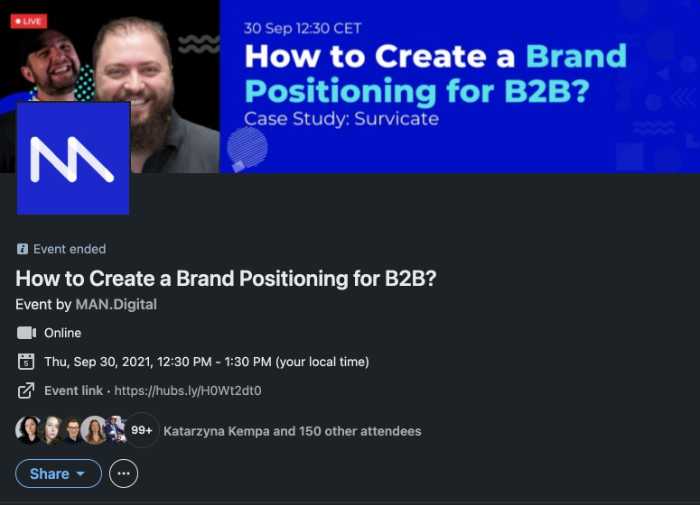
We boost these posts to get more traction.
Onboard your sales team to do Social Selling
I urge you please don't do social selling with automation tools.
Be genuine. Participate, connect, and listen to what your customers are saying. Only after you've figured out who they are and their target audience that you may offer insights on social, same way you would do in an outreach email.
Despite this, many individuals overlook it, yet it is increasingly evident that account selling entails personal branding and connecting on a more personalized level.
Here is a very good playbook on how to grow your LinkedIn organic traffic.
Follow-up with insights, not with shame.
Having content you'll always have a change to come back to your prospects.
Just imagine follow-ups.... how much more you could share to come back to your prospects.
Gong.io reviewed "304,174 emails-particularly, follow-up prospecting communications" according to the company's blog to find that longer emails are more likely to result in a meeting than shorter emails:

If your email is personalized, direct, and intentional in each sentence, you can afford to be more personal. Only then use a longer follow-up email. Learn here more about the study done by gong.io.
OK, but what you should write. Exactly what we just mentioned above, share ideas, thoughts, content that is relevant, and ask for micro yes rather than a hard yes - like a meeting. This will help you roll a conversation.
Optionally, you could test some account based retargeting - we do it to promote content.
Here is an example we use on Facebook:
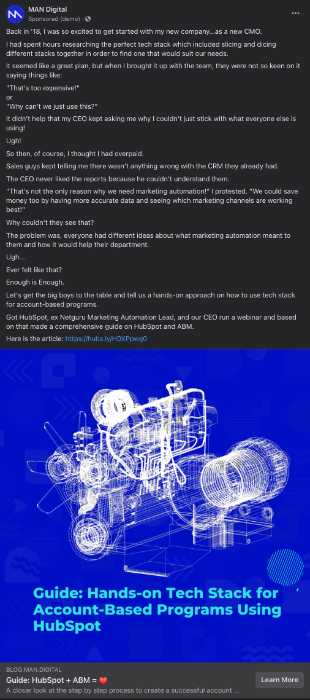
As you can see, account - based sales is not only about sales teams but also the marketing team.
The strategy here is easy, highlight the solution(with an article) you have for their pain points.
Don't worry that we do this on Facebook, everyone is there, and the cost is low, and it can just help with your account engagement.
Taaaddaaa... we are done... 🥳
Now this is just a tiny bit of what you could do for your B2B organization.
Hit me up with any thoughts in the comment below and if you have some specific questions hit us up on email.
Hit me up with any thoughts in the comment below and if you have some specific questions hit us up on email.
Account Based Sales Development Teams to Run Your Engagement Programs.
I know, the questions executives might have is "Who should run the account based selling?"
In terms of roles we run account based strategy with:
- ABM owner - strategist and project manager
- Sales research - runs all the research plus notifies sales team with intelligence to come back and engage with different people from your target list, targeting multiple stakeholders. This role goes hand in hand with SDR.
- SDR (sales development representative)- It enrols, personalizes and executes engagement strategies and open doors for BDR. This role is a more junior sales role.
- BDR (business development representative)- Develops more close relationship with the target companies and decision makers. Runs discovery calls and looks for cross-sell opportunities.
- Very good to have: Marketeer to create content and run events, ads. In short create demand for your product or service.
Excluding BDR, we help companies with all of the above.
Conclusions
Whoo.... long one. Here are some clear conclusions.
First thing first. Ask yourself if you are ready to start with an account based selling model?
ABS is for deals over €50K with over 90 days sales cycle.
Account based selling is a process that requires the combined efforts of sales and marketing to be successful. Account-based marketers should leverage content in order to build relationships with prospects, increase engagement on social media platforms, and drive traffic into their funnel.
Account-based sellers should focus on creating personalized outreach emails (with BASHO templates) as well as long follow-up email chains for those who do not respond immediately or reply at all after initial contact.
There are many ways an account base seller can use technology to reach out more efficiently than ever before!
Build the right team to run your account based programs, with an owner, researcher, SDR, BDR and marketeer.

